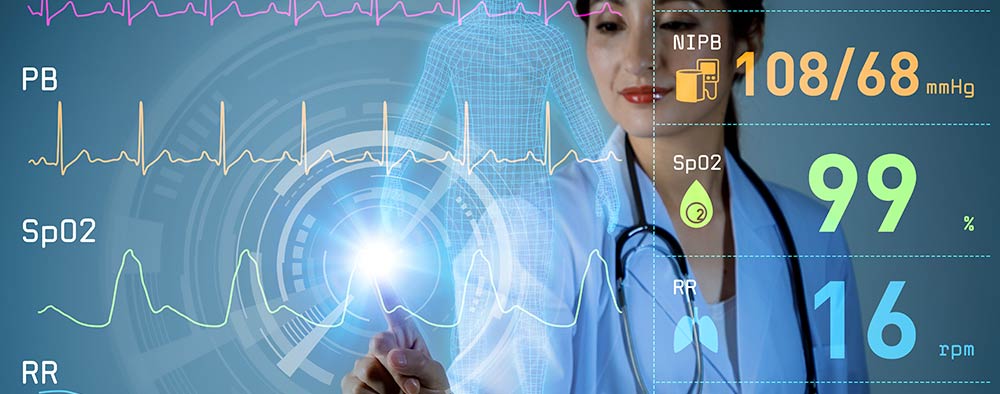by Ray Foxworth, D.C., FICC •
President & Founder, ChiroHealthUSA •
The great gift of healthcare is allowing patients to reclaim some measure of control over their lives, and to assert a degree of independence over their injuries or conditions. Chiropractors are increasingly able to provide this while keeping a close eye on their patients, even after they leave the clinic. It’s thanks to Remote Therapeutic Monitoring (RTM), one of the most effective, future-facing ways to empower both patients and practitioners by delivering more effective chiropractic care. This might sound a bit high-tech, but bear with us. In the same way that AI and big data are redefining our understanding of patient health, RTM is poised to transform our approach to patient care, enhancing both patient empowerment and chiropractic effectiveness.
Embracing RTM in Your Chiropractic Practice: The Promise of Connectivity
To give some background, RTM is a cutting-edge service that monitors various health conditions such as the musculoskeletal and respiratory system status, along with therapy adherence and response. This is done using FDA-approved medical devices that collect non-physiological data. (One Step, 2023) RTM extends our capabilities beyond the clinic, creating a sustained connection with patients that is not confined to appointments.
The exciting part is that RTM offers an abundance of benefits, not the least of which is providing a wealth of insights into patient adherence to home exercises, progress, and improved outcomes. This informed, data-driven approach accelerates patient recovery, eliminates unnecessary care, and allows us to assist more patients in less time. In other words, RTM is a fantastic tool to enhance our practice’s efficiency, patient-centered care, and fiscal health. (Medbridge, 2022) There are five RTM codes in total, four of which are applicable to patients with musculoskeletal conditions.
The Benefits of RTM
RTM provides key insights into patient adherence to home exercises, patient progress, and improved outcomes. More dynamically informed, data-driven decisions may hasten patient recovery and prevent further unnecessary care. From a fiscal perspective, healing patients more quickly means being able to accept others at an accelerated pace, boosting net patient revenue. A clinic offering RTM also has an obvious edge of increased customer-centric care and convenience over those that don’t; another factor which could attract more patients to your practice.
Ultimately, RTM’s biggest benefit is providing a deeper link between chiropractors and patients. This relationship is no longer limited to in-clinic appointments. It’s an ongoing connection that goes beyond appointments to become a more actionable part of a patient’s day-to-day life.
Implementing RTM in Your Practice: Addressing Best Practices and Coding
We understand that adopting new technology like RTM raises questions about proper protocol, billing, coding, and especially patient privacy. Like using AI, successful RTM implementation necessitates that we navigate these concerns effectively. To do this, we should follow these steps:
- Seek Patient Consent: Ensuring privacy and respect for our patients is paramount. As RTM steps into their personal lives and spaces, patients must provide informed consent for their health information to be collected, transmitted, and utilized.
- Understand RTM Coding: Get familiar with the RTM code set. These codes, such as 98975, 98976, 98977, can be used for services such as initial setup, patient education, and device supply.
- Utilize the Right Tools: Software as a Medical Device (SaMD) transmits information from the patient-facing mobile application to the provider-facing dashboard. This allows you to monitor the patient’s progress in their prescribed chiropractic treatment plans seamlessly.
The Future of RTM in Chiropractic Practices
In the future, integrating RTM into our practices is no more challenging than implementing AI technologies such as ChatGPT. It’s about recognizing where it can bring the most value – be it in monitoring patient health, managing therapy adherence, or tracking patient outcomes – and putting it to work.
As we leverage technologies such as RTM, we must never lose sight of the ultimate goal: providing the best care for our patients. We can harness these tools to empower our patients and deliver more effective, evidence-based chiropractic care.
So, let’s embrace this technological revolution. Together, we can forge a future where advanced technology and healthcare go hand-in-hand, delivering outstanding patient outcomes and making a lasting impact in our field. After all, data is our ally and, with these advanced tools, we are limited only by our imaginations. We are game for this new era in chiropractic care. Are you?
Kaizenovate’s patient-facing mobile application transmits information to the provider-facing dashboard allowing patients and providers to monitor patient progress in prescribed chiropractic treatment plans. You can schedule your free demo here.










 ▶︎
▶︎  Why is the Discount Challenge prize amount $15,024? Because that is the average “per-occurrence” fine for Medicare inducements. That’s not $15,024 per patient, that’s not per provider, that’s PER VISIT. Stinks, doesn’t it? To us, the prize amount is worth the investment if we can help our profession better understand proper discounting.
Why is the Discount Challenge prize amount $15,024? Because that is the average “per-occurrence” fine for Medicare inducements. That’s not $15,024 per patient, that’s not per provider, that’s PER VISIT. Stinks, doesn’t it? To us, the prize amount is worth the investment if we can help our profession better understand proper discounting.